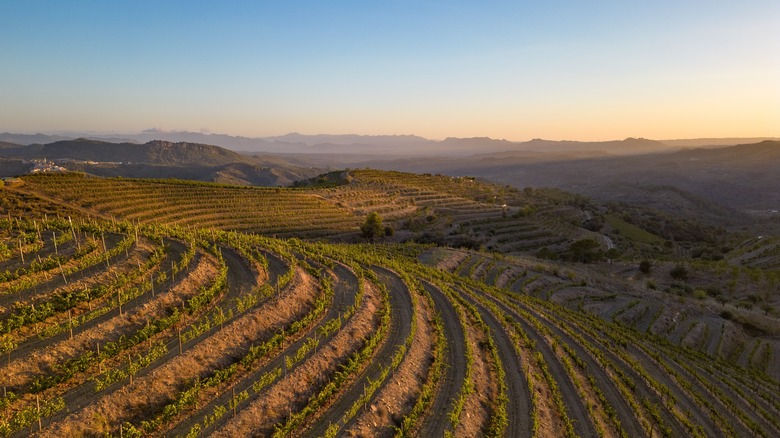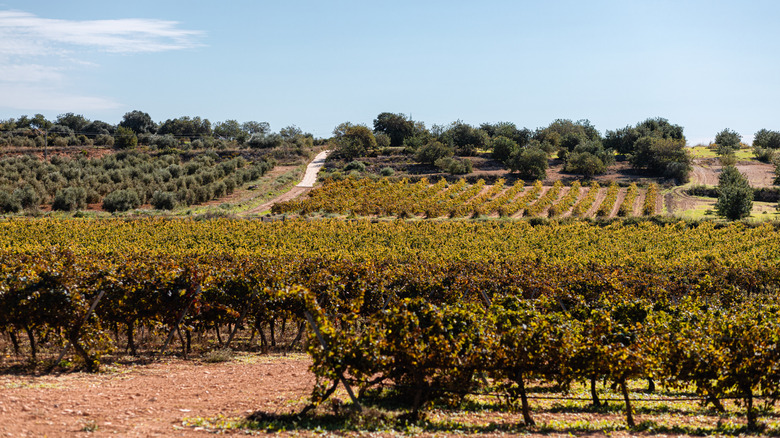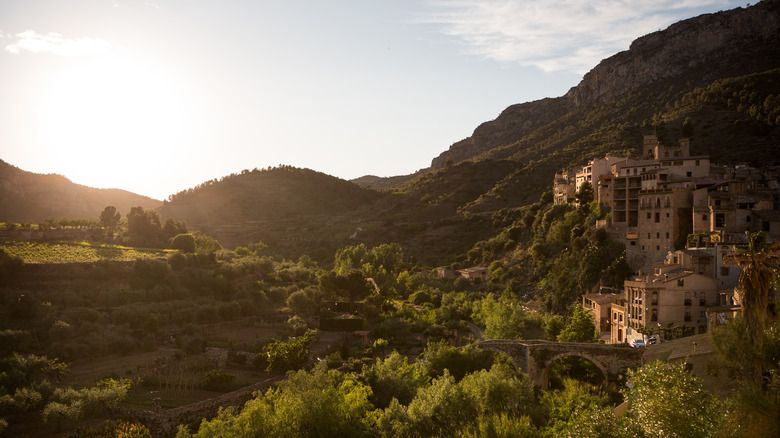One Of Spain's Best-Kept Secrets Is A Scenic Region Producing The Country's Most Praised Wine
The small but mighty wine region of Priorat sits in the heart of Catalonia and has long since captured the attention of wine enthusiasts worldwide. This rural area, only about 90 miles southwest of Barcelona, has a unique terroir that produces some of Spain's most complex and sought-after wines. While Priorat isn't an island, its landscape and wine production rival some of the best islands for wine tasting around the world.
The history of Priorat's wine-making tradition can be traced back to Roman times. However, it was in 1194 that the region's viticultural identity truly began to take shape, when a group of Carthusian monks arrived and brought with them knowledge and techniques from Provence. Over time, Priorat became one of Spain's most prestigious wine regions, a testament to the significance of terroir and the value of traditional wine-making techniques.
For wine enthusiasts and tourists alike, the best time to visit is generally during the late spring, from May to June, or early fall, from September to November. These periods offer pleasant temperatures for outdoor activities and vineyard tours, while also coinciding with important stages in the wine-making process. The fall is an especially exciting time to visit as it is the grape harvesting season.
The terroir and wines of Priorat
Priorat's distinctive landscape is characterized by slate slopes and a warm Mediterranean climate. The region's iconic terraced hillsides, known as "costers," were developed by monks over the years and are still used today. These terraces, combined with protection provided by the Serra de Montsant mountain range, create great conditions for grape cultivation.
The key to Priorat's exceptional wines is its soil, called "llicorella" in Catalan. The soil's blend of slate and mica provides rich nutrients. It also forces plants to grow deeper roots in search for water. Some roots of vines in Priorat have been found to grow 32 feet into the ground, a slow process that allows them to absorb nutrients from their surroundings. The combination of the region's climate, old vines, and soil type results in fewer but better-quality grapes.
Priorat is primarily known for its red wines, with garnacha (grenache) and cariñena (carignan) being the two main grape varieties. The region's reds showcase the unique minerality of the terroir. These wines are typically characterized by their deep color, high alcohol content, and intense flavors of cherries, stone fruits, and rich spices.
What else to see and do in Priorat
Priorat is more than just another underrated mountainous wine region in Europe. It's a place that surprises visitors with charming villages, beautiful architecture, and interesting landscapes, making it an exceptional destination for those looking to experience the best of Spain through a road trip or an extended stay.
Wine enthusiasts can explore the area through the Denominació d'Origen Qualificada (DOQ) Priorat Wine Route and the DO Montsant Wine Route. These routes offer opportunities to visit wineries, taste local wines, and learn about the region's cultural history. For those interested in outdoor activities, Priorat boasts a number of well-marked footpaths, including wine trails, drystone trails, and hikes in the Montsant Nature Park.
The region's commitment to quality is evident in its DOQ status — the highest possible wine classification in Spain – which it shares only with Rioja. This classification underscores the high standards and strict regulations governing wine production in Priorat. As of 2024, the region is home to about 100 wineries, each contributing to its reputation as a producer of world-class wines.
While red wines dominate in Priorat, the region is also making strides in white wine and dessert wine production. Growers are experimenting with varieties like garnacha blanca, macabeo, and chenin blanc.


